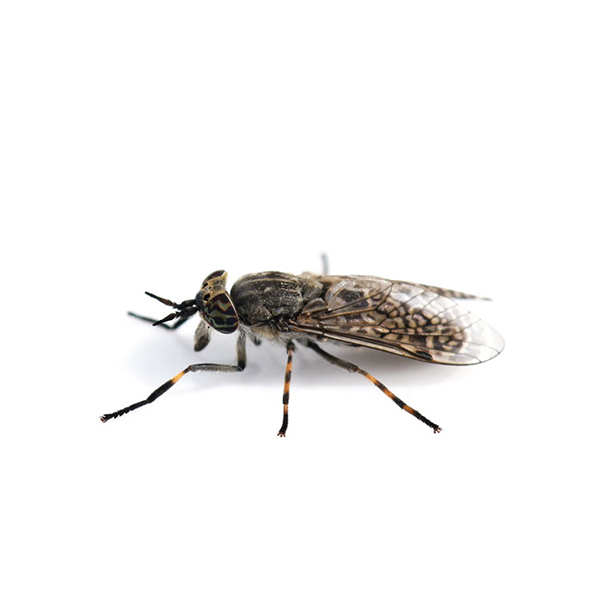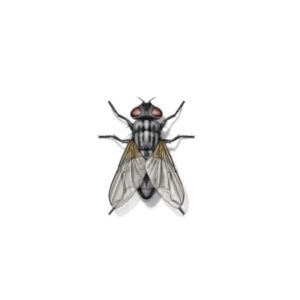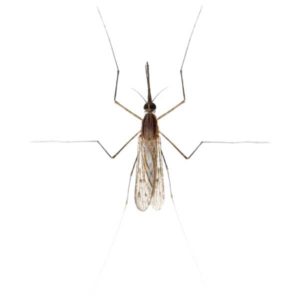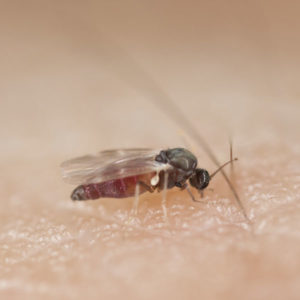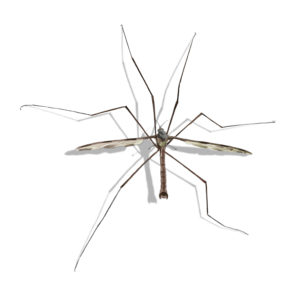Horse flies, scientifically known as Tabanidae, are a significant nuisance to both humans and animals due to their painful bites. Horse flies are large, heavy-bodied insects that are persistent pests of wildlife, livestock, and humans. Their blood-sucking habits also raise concerns about the possible transmission of disease agents. They are notorious pests of horses, mules, cattle, hogs, dogs, and other mammals, including humans. Deer flies, which commonly bite humans, are smaller with dark bands across the wings and colored eyes similar to those of horse flies. An attack by a few of these persistent flies can make outdoor work and recreation miserable.
Unsure if your dealing with horse flies, or another species? Take a look at the most common flies found in North Carolina to help identify which fly you are dealing with.
Horse Fly Identification
What Do Horse Flies Look Like?
Horse flies are large, robust insects with a stout body and large, often brightly colored eyes. They measure between ¾ to 1 ¼ inches in length and have a distinctive appearance due to their large eyes, which meet dorsally. Their bodies are usually dark brown or black, and some species may have patterned wings.
Signs of a Horse Fly Infestation
Signs of a horse fly infestation are evident when these large flies are observed in abundance around livestock, particularly horses, cattle, and other large mammals. Horse flies are most active during the warmer months, and their presence can be particularly pronounced near bodies of water or areas with dense vegetation.
Habitat, Diet, Lifecycle & Bites
Where Do Horse Flies Live?
Horse flies prefer habitats with access to water, such as ponds, marshes, and streams, as they require moist environments for breeding. They are commonly found in rural and agricultural areas where livestock, their preferred hosts, are present. Horse flies are particularly attracted to areas with dense vegetation and tall grasses, which provide shade and resting spots. They survive by burrowing down into the sand or gravel substrate of the water body they inhabit.
Diet of a Horse Fly
Female horse flies require blood meals for egg production and are notorious biters of mammals, including horses, cattle, deer, and humans. They use their sharp mouthparts to pierce the skin and feed on blood, while male horse flies primarily feed on nectar and plant juices. The painful bites of female horse flies can cause discomfort, itching, swelling, and potential allergic reactions in some individuals.
Life Cycle of a Horse Fly
The life cycle of a horse fly consists of four stages: egg, larva, pupa, and adult. Female horse flies deposit their eggs in or near water, where they hatch into larvae known as “nymphs.” These larvae develop in moist environments, feeding on organic matter and small invertebrates. After pupating, adult horse flies emerge and continue the cycle by seeking blood meals for reproduction.
Horse Fly Bites
Horse fly bites are characterized by their sharp, cutting mouthparts, which cause pain and irritation. When a horse fly bites, it releases anticoagulants to prevent blood clotting, resulting in prolonged bleeding and increased discomfort for the host. The bites can lead to secondary infections if not properly cleaned and treated.
Are Horse Flies Dangerous?
While horse flies are not known to transmit diseases to humans, their bites can result in significant discomfort and potential secondary infections. In livestock, repeated horse fly bites can lead to stress, reduced productivity, and even transmit diseases such as anaplasmosis and equine infectious anemia (EIA). Additionally, severe allergic reactions to horse fly bites are possible in some individuals, requiring prompt medical attention.
How to Get Rid of Horse Flies?
Effectively managing horse fly populations involves an integrated approach targeting both adult flies and their breeding sites. To eliminate breeding grounds, remove standing water and organic debris, and keep vegetation trimmed to reduce resting spots. Utilize commercially available traps in active areas. Personal protection includes wearing long-sleeved shirts and pants to minimize exposed skin. By implementing habitat modification and physical controls, horse fly infestations can be effectively reduced.
If you are dealing with a persistent horse fly problem on your property, contact your local fly exterminators.
Horse Fly Prevention Tips
- Maintain Proper Hygiene: Keep outdoor areas clean and free of organic debris to discourage horse fly breeding.
- Install Screens: Use screens on windows and doors to prevent horse flies from entering buildings and reduce indoor infestations.
- Animal Care: Implement grooming practices for livestock and pets to minimize attractants such as sweat and body odors.
Need help with Horse Flies control?
FAQs
What Causes Horse Flies to Appear?
Horse flies are attracted to areas with suitable breeding sites, including bodies of water and dense vegetation. They are also drawn to the carbon dioxide and warmth emitted by mammals, making them common around horses, cattle, and other large animals.
What Happens When a Horse Fly Bites You?
When a horse fly bites, it uses its sharp mouthparts to pierce the skin and feed on blood. The bite can cause pain, itching, swelling, and potential allergic reactions in some individuals.
Why Are Horse Flies Attacking Me?
Horse flies are attracted to movement, warmth, and the carbon dioxide emitted by mammals. If you’re moving or sweating, you may inadvertently attract horse flies, especially in areas with high fly activity.
What Attracts Horse Flies to You?
Horse flies are attracted to the scent of perspiration, as well as the carbon dioxide and warmth emitted by mammals. They are also drawn to movement and dark-colored clothing, making them more likely to target individuals in motion.

